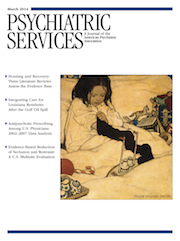Elders
Ryan McIlvain, identified on the book jacket as a former member of the Mormon Church, describes the two young men in his first novel thusly: “Trapped, liminal, purgatorial.” This slim psychological tale portrays two protagonists who are imprisoned in the dyadic dance of their shared Mormon mission. Although the book is small in scope, it encompasses three imbricated themes. It embodies a coming-of-age narrative and, concurrently, an inside view of a Mormon mission. It is also a cross-cultural exploration of attempting to confront the Other: notably one’s family, one’s co-missionary in an alien culture, and inevitably oneself.
Literarily, this novel is a bildungsroman, a classic coming-of-age progression, although the two primary characters, Elder McLeod and Elder Passos, devise two very different solutions to the developmental question. In the process they are often seen as alienated and anxious as they traverse the anticipated territory of late adolescence, with its sexual energy, longing for home, and the awkward dialectic between Church and body.
The book presents an interior look at the implicit demands of the Mormon mission—that two-year commitment away from family and friends. It seems to bring into high and harsh relief the expected quest and accompanying angst of late adolescence and early adulthood. McIlvain adroitly describes the daily frustration of knocking on doors, the co-missionaries’ painfully earnest desire to convert even just one family, and the many ways that the mission structure itself subverts their bodily desires and tempts them with religious doubts. At the end of the narrative, one feels as if some intimate experience of the Mormon mission has been successfully conveyed to the reader.
Elder McLeod confronts the Other not only vis-à-vis his Brazilian companion but in being placed as a missionary in Brazil, clearly outside his culture of origin. Elder Passos, on the other hand, confronts his very American Other as he is searching for a place to stay and courting introductions from McLeod so that he can pursue his dreams in America. Both young men, of course, have to face the internalized Other as they fashion different responses to their painful failure to convert Brazilians to Mormonism.
All told, these carefully figured concepts of separation anxiety, psychological alienation, and religion as formulaic solution to the quandary of mortality would justify clinicians reading this book about the conjoined plight of these two Mormon missionaries. At times overwritten, at times softly lyrical, McIlvain’s novel stands as a useful parable and insider’s look for clinicians who treat young Mormons during or after their mission.



